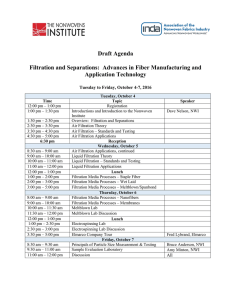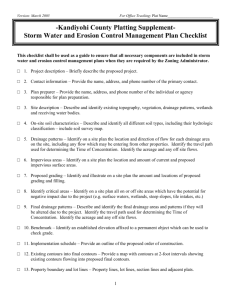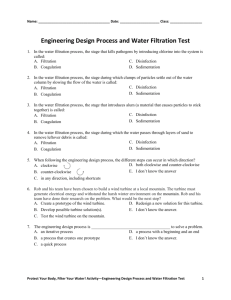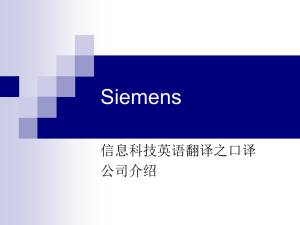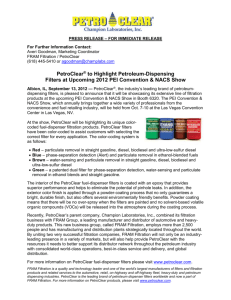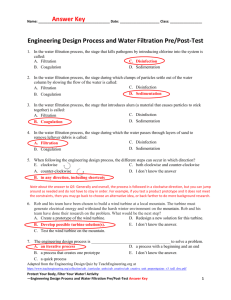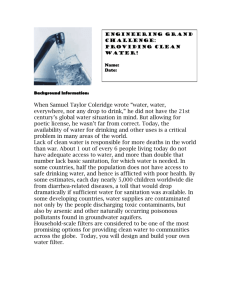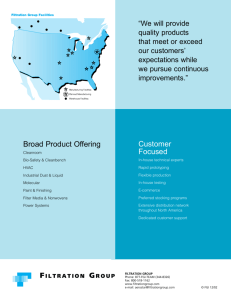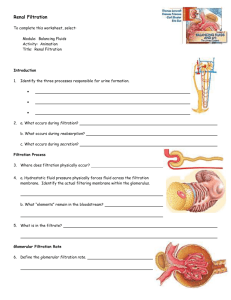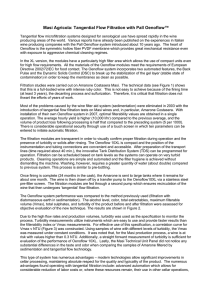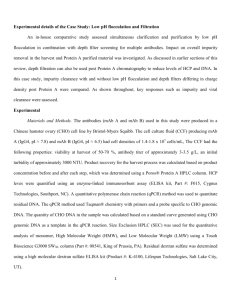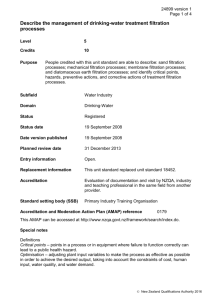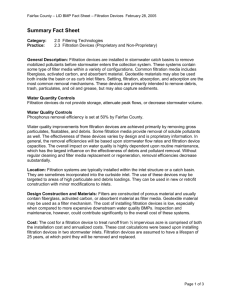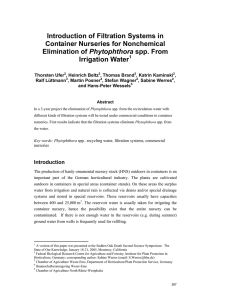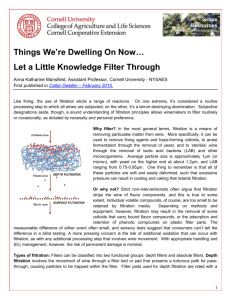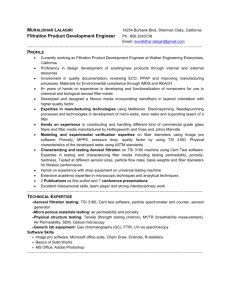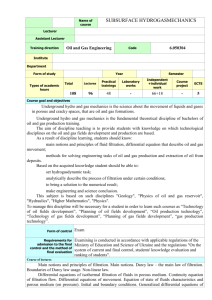Lesson Plan Relevance To Externship
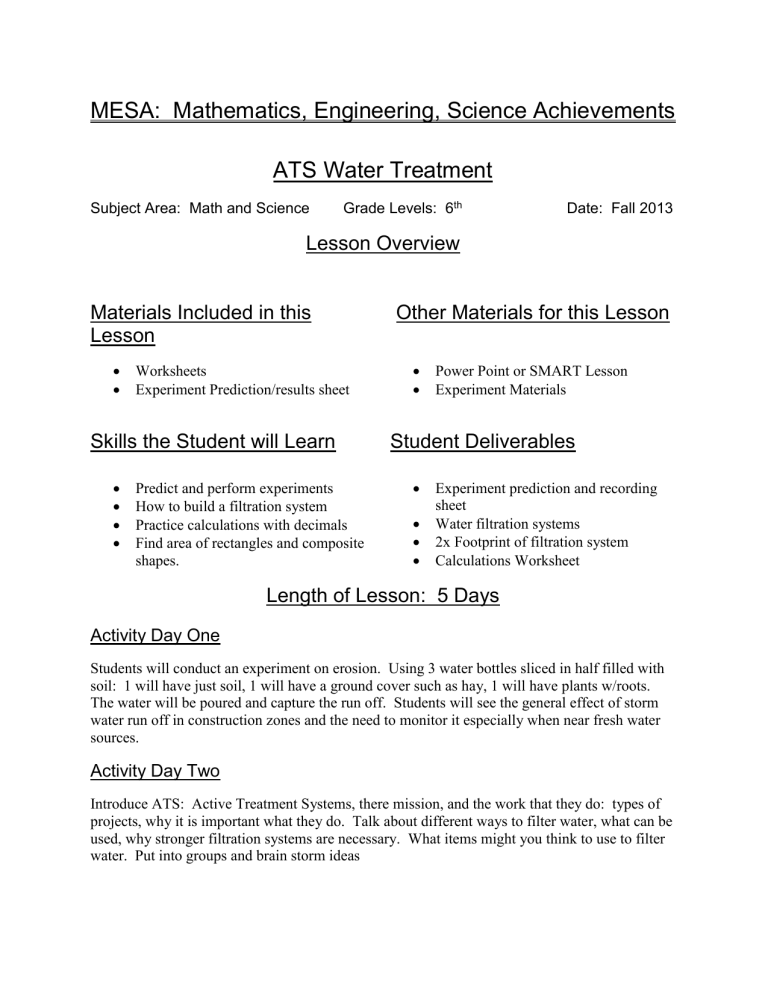
MESA: Mathematics, Engineering, Science Achievements
ATS Water Treatment
Subject Area: Math and Science Grade Levels: 6 th Date: Fall 2013
Lesson Overview
Other Materials for this Lesson Materials Included in this
Lesson
Worksheets
Experiment Prediction/results sheet
Skills the Student will Learn
Power Point or SMART Lesson
Experiment Materials
Student Deliverables
Predict and perform experiments
How to build a filtration system
Practice calculations with decimals
Find area of rectangles and composite shapes.
Experiment prediction and recording sheet
Water filtration systems
2x Footprint of filtration system
Calculations Worksheet
Length of Lesson: 5 Days
Activity Day One
Students will conduct an experiment on erosion. Using 3 water bottles sliced in half filled with soil: 1 will have just soil, 1 will have a ground cover such as hay, 1 will have plants w/roots.
The water will be poured and capture the run off. Students will see the general effect of storm water run off in construction zones and the need to monitor it especially when near fresh water sources.
Activity Day Two
Introduce ATS: Active Treatment Systems, there mission, and the work that they do: types of projects, why it is important what they do. Talk about different ways to filter water, what can be used, why stronger filtration systems are necessary. What items might you think to use to filter water. Put into groups and brain storm ideas
2
Activity Day Three
Build a filtration system and filter dirty water using ideas from day 2. If time show experiment of what different polymers such as chitosan will do.
Activity Day Four
In teams, create 2 blue print of a filtration system and calculate the area foot print needed for each system
Activity Day Five
Finish blue prints and work on real life problems worksheet. Ex. Calculate cost of different treatment systems for 1 month, 4 months, 6 months and a year.
Enrichment Suggestions
Delve deeper into the math. Calculate the cost of polymers for a project based on gallons per second. Calculate entire costs for projects. Create in estimate bid for a water treatment job based on rough numbers. Create a 3 dimensional model of the different water treatment system that can be built.
Student Resources
Students will have notes taken from power point and an information packet for the entire project.
They will also be in cooperative learning groups with clear expectations.
Common Core Academic Standards
Ratios and Proportional Relationships
6.RP 2.
Understand the concept of a unit rate a/b associated with a ratio a:b with b ≠ 0, and use rate language in the context of a ratio relationship.
6.RP
3. Use ratio and rate reasoning to solve real-world and mathematical problems
The Number System 6.NS
6.NS
3. Fluently add, subtract, multiply, and divide multi-digit decimals using the standard algorithm for each operation.
Geometry 6.G
6.G
1. Find the area of right triangles, other triangles, special quadrilaterals, and polygons by composing into rectangles or decomposing into triangles and other shapes; apply these techniques in the context of solving real-world and mathematical problems.
Reading Standards for Literacy in Science and Technical Subjects 6-12
9. Compare and contrast the information gained from experiments, simulations, video, or multimedia sources with that gained from reading a text on the same topic.
3
CTE Pathway Standards
Building and Construction Trades
Knowledge and Performance Anchor Standards
5.0 Problem solving and Critical Thinking
5.1 Identify and ask significant questions that clarify various points of view to solve problems.
5.2 Solve predictable and unpredictable work-related problems using various types of reasoning (inductive and deductive) as appropriate.
5.3 Use sytems thinking to analyze how various components interact with each other to produce outcomes in a complex work environment.
Pathway Standers
B1.1 Understand the importance of knowing a sites water table and its effect on site preparation.
B1.5 Understand the importance and impact of environmental concerns and regulations in relation to building site preparations.
B3.2 Distinguish soil types and land cover as related to runoff, precipitation, drainage and seepage.
B3.2 Recognize non-point-source (NPS) pollution, erosion, and erosion control methods.
B3.3 List sources of NPS and their possible impact related to water quality.
B3.4 Prepare site plan and grading and drainage plan.
B4.0 Demonstrate understanding of water and wastewater systems.
B4.2 Describe drinking-water sources, contaminants, disposal options, regulations, and basic treatment methods.
B4.3 Perform basic calculations for sizing pipe and pumps for the movement of water
*B4.4 Define gravity and forced systems.
*B8.3 Estimate the cost of supplies and materials for an engineering and heavy construction project. (Water Treatment System)
B8.6 Demonstrate understanding of storm drainage, retention ponds, wastewater treatment.
Lesson Plan Relevance To Externship
ATS (Active Treatment Systems) primarily treats storm water and ground water from construction sites. The students will become aware of erosion especially in a construction zone.
They will learn how to treat dirty water and that will be able to than be discharged into the environment. Students also will calculate and create a system footprint and costs for a set amount of time. The Lesson Plan mirrors a part of what I experienced during my time with ATS.
Rubric for the ATS Water Project
Student
Deliverables
Experiment 1
Erosion prediction and results sheet
Notebook
Water Filtration
System
Worksheet
4
Exceeds
Expectations
3
Meets
Expectations
2
Approaches
Expectations
Completes all aspects of experiment and analyzes the results
All key points are covered along with a written analysis of information
Perfect Water PH
Completes all aspects of experiment
All key points covered
Completes 1 aspect of experiment
Some main points but missing 1 or 2 key points
Able to create water with a clear NTU (Turbidity)
Water is clearing but still very cloudy
10/10 8 or 9 /10 6 or 7/10
1
Fails to meet
Expectations
Does not complete any part of experiment
No Notes Taken
No change in the water
Turbidity
0 – 5 /10
4


![June 2013 [DOCX 24.38KB]](http://s3.studylib.net/store/data/006990913_1-45414924984da7777020f5c1725fdda9-300x300.png)
